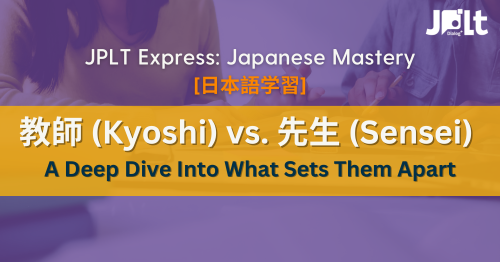Experience the Charm of Japanese Food! Enjoyable Dishes and Eating Tips for Beginners
Experience the Charm of Japanese Food! Enjoyable Dishes and Eating Tips for Beginners Ramen, sushi, tempura… Japanese cuisine is rich in variety! But that’s not all. In fact, Japan is home to...
The Difference Between “召し上がりください (meshiagarikudasai)” and “召し上がってください (meshiagatte kudasai)”
The Difference Between “召し上がりください (meshiagarikudasai)” and “召し上がってください (meshiagatte kudasai)” What’s the Difference Between “召し上がってください (meshiagatte kudasai)” and “お召し上がりください (omeshiagarikudasai)”? To cut to the chase, the correct phrase is “召し上がってください (meshiagatte kudasai)”....
The Difference Between “幸せ” (Shiawase), “幸い” (Saiwai), and “幸福” (Kōfuku)
The Difference Between “幸せ” (Shiawase), “幸い” (Saiwai), and “幸福” (Kōfuku) It can be difficult to decide which word to use depending on the situation!”幸せ” (Shiawase), “幸い” (Saiwai), “幸福” (Kōfuku)… aren’t they...
The Difference Between “食べたことがない” (Tabeta koto ga nai) and “食べなかったことがある” (Tabenakatta koto ga aru)
The Difference Between “食べたことがない” (Tabeta koto ga nai) and “食べなかったことがある” (Tabenakatta koto ga aru) Both “食べたことがない” (Tabeta koto ga nai) and “食べなかったことがある” (Tabenakatta koto ga aru) refer to experiences involving eating,...
The Difference Between “食べてはいけません” (Tabete wa ikemasen) and “食べないでください” (Tabenai de kudasai)
The Difference Between “食べてはいけません” (Tabete wa ikemasen) and “食べないでください” (Tabenai de kudasai) Both “食べてはいけません” (Tabete wa ikemasen) and “食べないでください” (Tabenai de kudasai) express the idea of “forbidding eating,” but do they have...
Understanding the Meaning of “お伺いしておりますか” (Oukagai shiteimasu ka)
Understanding the Meaning of “お伺いしておりますか” (Oukagai shiteimasu ka) Have you ever heard the phrase “お伺いしておりますか” (Oukagai shiteimasu ka) and wondered what it really means? Maybe you’ve encountered it in business contexts but...
Explore Japan’s Long History! A Beginner’s Guide to History
Explore Japan’s Long History! A Beginner’s Guide to History “Japanese history seems difficult” or “Where should I start studying?” Have you ever thought about that? History is not just about memorizing past...
Let’s Learn the Difference Between Shrines and Temples in Japan!
Let’s Learn the Difference Between Shrines and Temples in Japan! To understand Japanese culture, it’s important to know the difference between shrines and temples. Both are significant religious sites in Japan, but...
Clarifying “止まる” (Tomaru) vs. “止める” (Tomeru): Key Differences
Understanding the Difference Between “止まる” (Tomaru) and “止める” (Tomeru) Made Easy The difference between “止まる” (tomaru) and “止める” (tomeru) can be confusing. Let’s explain it simply! How should you use each one?...
Eyes Closed: Me wo Tsuburu vs Me wo Tojiru Differences
The Difference Between “目をつぶる” (me wo tsuburu) and “目を閉じる” (me wo tojiru) Have you ever heard phrases like “目をつぶって!” (me wo tsubutte – Close your eyes!) or “目を閉じて!” (me wo tojite –...
Clarifying ‘思いつく’ (Omoitsuku) and ‘思い浮かべる’ (Omoikaberu): What’s the Difference?
Understanding the Difference Between “思いつく” (Omoitsuku) and “思い浮かべる” (Omoikaberu) When you first encounter the Japanese expressions “思いつく” (omoitsuku) and “思い浮かべる” (omoikaberu), they might sound quite similar. Both seem to relate to the...
教師 (Kyoshi) vs. 先生 (Sensei): A Deep Dive Into What Sets Them Apart
By JPLT DIALOG Plus | Published on August 30, 2024 | Last updated on October 21, 2025 When learning Japanese, the distinction between 教師 (Kyoshi) vs. 先生 (Sensei) often trips up students....
Unpacking “通りすがり” (Toorisugari): What Does “Sugari” Mean?
Exploring the Meaning of “通りすがり” (Toorisugari): What Does “Sugari” Mean? When you first encounter the term “通りすがり” (toorisugari), you might wonder about the meaning of “すがり” (sugari). This term seems unique and...
Ooku no Oya vs Oya no Ooku: Understanding Their Nuances
The Difference Between “多くの親” (Ooku no Oya) and “親の多く” (Oya no Ooku) in Japanese When learning Japanese, you might come across phrases like “多くの親” (ooku no oya) and “親の多く” (oya no ooku)....
Tomodachi vs. Yuujin: Choosing the Right Word for ‘Friend’
Understanding the Difference Between “友達” (Tomodachi) and “友人” (Yuujin) Both “友達” (tomodachi) and “友人” (yuujin) translate to “friend” in English, but did you know they are used in different situations? You might...
“Nihon de” vs. “Nihon e”: Travel Contexts in Japanese Explained
The Difference Between “Nihon de Ryokō Shimasu” and “Nihon e Ryokō Shimasu” “Both phrases indicate a place, but what’s the difference between ‘Nihon de’ (日本で) and ‘Nihon e’ (日本へ)?”“Does ‘Nihon de Ryokō...
Shinikui vs Shigatai: Understanding Their Subtle Differences
The Difference Between “Rikai Shinikui” and “Rikai Shigatai” “Don’t both ‘rikai shinikui’ (理解しにくい) and ‘rikai shigatai’ (理解しがたい) mean ‘difficult to understand’? Why should they be used differently?” “In which contexts is it...
Ichido vs. Ikkai: Nuances of “Once” in Japanese Explained
The Difference Between “Ichido” and “Ikkai” “If both ‘ichido’ (いちど) and ‘ikkai’ (いっかい) mean ‘once,’ why is it necessary to differentiate between them?” “In what contexts should ‘ichido’ and ‘ikkai’ be used...
“Wasuregachi” vs. “Wasuregimi”: Understanding Japanese Forgetfulness Nuances
The Difference Between “Wasuregachi” and “Wasuregimi” “Don’t both mean ‘forget’? Why do we need to distinguish between them?”“Isn’t ‘wasuregachi’ almost the same as ‘wasureppoi’?”“Can you tell me when I should use...
“Chiisai” vs. “Chiisana”: Learning Japanese Word Nuances
The Difference Between “Chiisai” 小さい and “Chiisana” 小さな “Don’t both mean ‘small’? Why do we need to differentiate between them?” “I understand ‘talking in a small voice,’ but can ‘chiisana’ be used...

